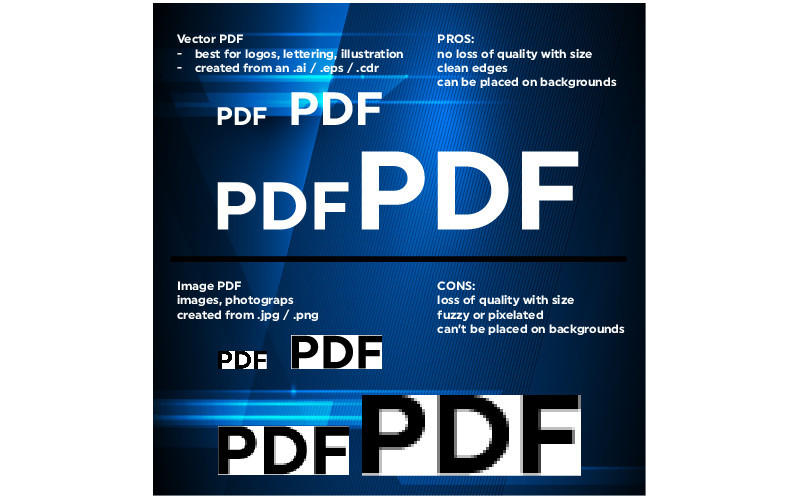
Explaining the difference between a vector and image PDF
A vector PDF (Portable Document Format) and an image PDF are two different types of PDF files that are used for different purposes.
A vector PDF file is created using line art to define the shapes and lines within the document. This means that the graphics are made up of scalable vector objects, rather than pixels. As a result, vector PDFs can be enlarged without losing quality, since the line art remains the same, regardless of the size. Vector PDFs are typically used for graphics that require precision and accuracy, such as diagrams, logos, and illustrations.
On the other hand, an image PDF is created by converting a raster image (such as a JPEG or PNG file) into a PDF format. This means that the graphics in the PDF are made up of pixels, which can become blurry or pixelated when enlarged beyond their original size. Image PDFs are typically used for photographs and other complex images that cannot be easily created using vector graphics.
In summary, the main difference between a vector PDF and an image PDF is that the former is made up of scalable vector objects that retain their quality when resized, while the latter is made up of pixels that can become blurry or pixelated when enlarged beyond their original size.
